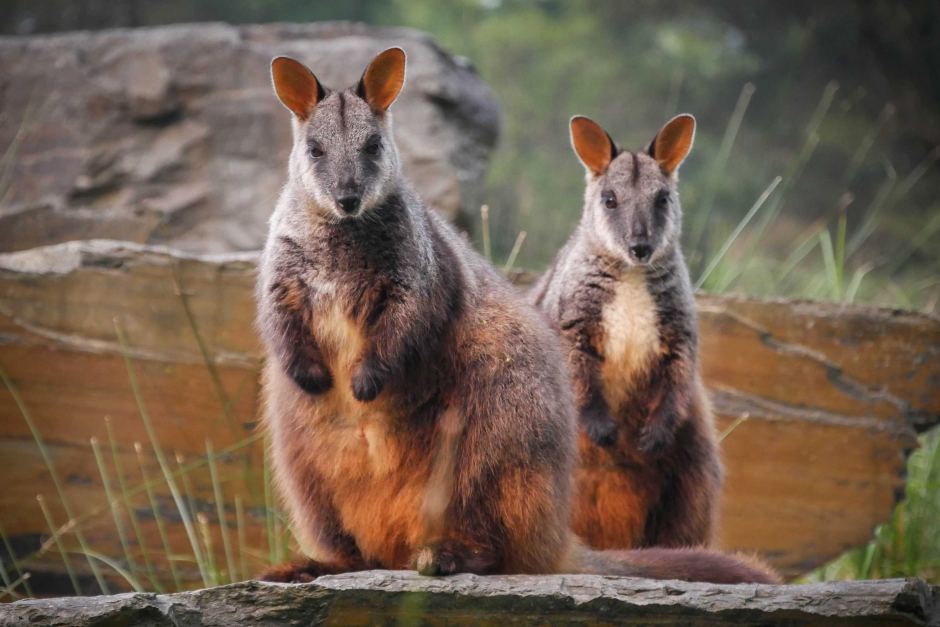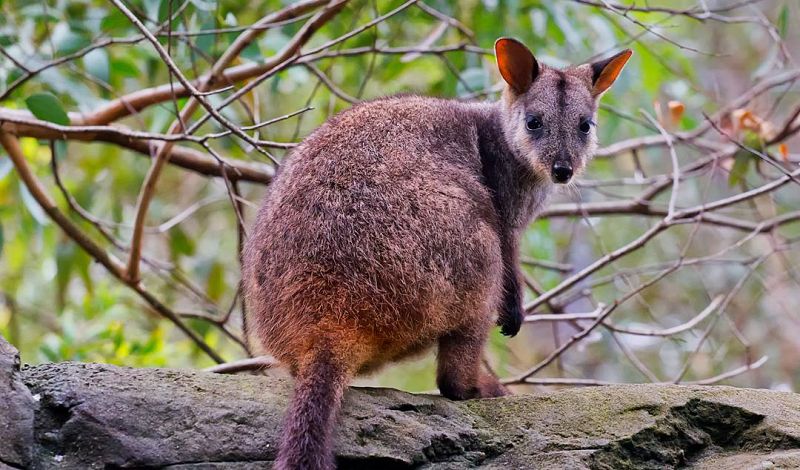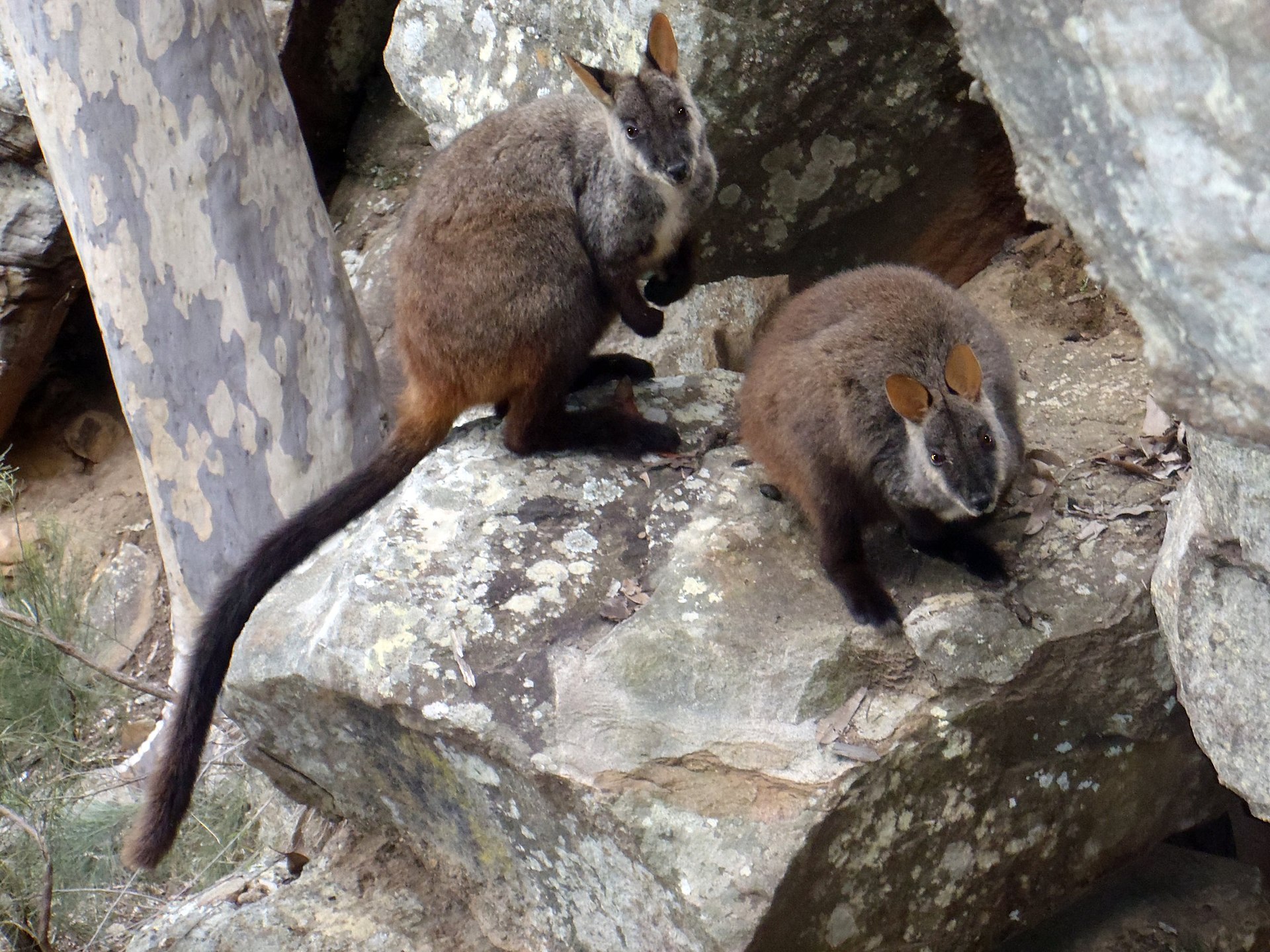Petrogale penicillata, commonly known as the brush-tailed rock-wallaby or small-eared rock-wallaby, is a kind of wallaby that can be found in the Blue Mountains and southeastern Queensland in Australia. They can be seen throughout the upper Blue Mountains and at Jenolan Caves. Rock wallabies are endemic to Australia.
What does the brush-tailed rock-wallaby look like?
Standing about 30cm high and weighing a little over two kilograms, it is smaller than most of its kind. Its fur is a tawny brown with paler underparts and darker feet, ears, and tail. The brush-tailed rock-wallaby has a pale band across its nose bridge and another behind each eye, as well as white whiskers around its chin. The tail is short and bushy, measuring 10–15 cm long. It has small rounded ears, which are usually pressed flat against its head. The eyes are set in an alert expression, giving it a perpetually surprised look.
Where does it live?
They inhabit rocky habitats such as boulder piles and limestone outcrops. The brush-tailed rock wallaby tends to avoid major population centres. It is currently restricted to certain isolated fragments of remnant bushland near Sydney, mainly within Blue Mountains National Park and is listed as vulnerable on the Environment Protection and Biodiversity Conservation Act 1999 (EPBC) list.
A brush-tailed rock wallaby is a medium-sized, solitary, nocturnal and arboreal. Wallabies are typically nocturnal as they have large ears and eyes that give them excellent night vision, but also so they do not need to be active during hot hours of day. This species prefers cooler temperatures; with temperatures above 18c acting as a stressor.
How does it move around?
This species is an excellent climber and so can be found in trees as well as on rocks. It is also a good swimmer and often takes to water when startled by predators. Being nocturnal, it sleeps during most of the day, only moving around once darkness has fallen. At night it feeds on various grasses and herbs. If a brush-tailed rock-wallaby feels threatened or attacked, it will throw itself onto its back to show its claws before scampering away in a zigzag motion. During fights between males, they display their teeth and claws whilst growling loudly.
What are its habits?
The brush-tailed rock wallaby is a nomadic, nocturnal animal. It has no natural predators and is known to live up to 18 years of age. Unlike other wallabies, it lives in pairs. The brushtail also uses its tail for balance and as an extra limb for jumping. It’s extremely agile and spends most of its time leaping from boulder to boulder or hiding in caves or crevices that are very difficult for predators to reach.
They have thick fur with two distinct colours: white on their underside and grayish brown on top. This helps them blend into their surroundings while they hide during daylight hours. They eat mostly grasses, flowers, shoots, leaves and bark. Their primary water source comes from dew they lick off plants early in the morning before heading out to find food later in the day. They return to drink water once more before going back out at night again.
Population distribution, abundance and threats
The small-eared rock wallaby is native to New South Wales and southern Queensland. It is currently listed as a threatened species in NSW and endangered in Queensland. There are an estimated 25,000 mature individuals left in Australia. The small-eared rock wallaby has experienced a 60% reduction in its population size since European settlement.
In the 1900s half a million Rock-wallabies were hunted in Australia for the fur trade and bounties.
They have been affected by feral animals such as foxes, cats and dogs that prey on them. They have also been affected by habitat loss due to land clearing for agriculture, urban development and mining activities.
![]()




